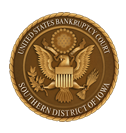The BTATC Act, signed into law on June 21, 2022, temporarily increased the debt threshold in subchapter V of chapter 11 and chapter 13 of title 11 of the United States Code and made technical corrections to the Bankruptcy Administration Improvement Act of 2020 (BAIA). Certain provisions of the BTATC Act sunset two years from the date of enactment and, absent any legislative action, these provisions expired at midnight on June 21, 2024. With the expiration of these provisions, please note the following:
- 11 U.S.C. § 1182(1) will no longer include the increased aggregate debt limit of $7.5 million in subchapter V’s definition of a “debtor” but will revert and refer to the definition of a “small business debtor” in section 101(51D) of the Bankruptcy Code.
- 11 U.S.C. § 109(e) will revert to include the distinction between secured and unsecured debt amounts to determine eligibility for chapter 13 cases. Those amounts are reinstated to less than $465,275 for unsecured noncontingent, liquidated debt and less than $1,395,875 for secured noncontingent, liquidated debt.
- 11 U.S.C. § 1182(1) was amended to clarify that the exclusion in the definitions of “small business debtor” and “debtor” applies to an affiliate of a corporation subject to the reporting requirements under sections 13 or 15(d) of the Securities Exchange Act of 1934, rather than an affiliate of “an issuer.” After June 21, 2024, section 1182(1) will read ‘‘(1) debtor.—The term ‘debtor’ means a small business debtor.’’.
Interim Rule 1020, which courts adopted as a local rule while the BTATC Act was in effect, will be inapplicable after June 21. There will also be changes to Official Form 101, question 13, and Official Form 201, question 8, reverting the options and language in those questions to how they stood after the Small Business Reorganization Act (SBRA) was enacted effective February 2020. Those updated forms will be available on uscourts.gov in the coming week.
